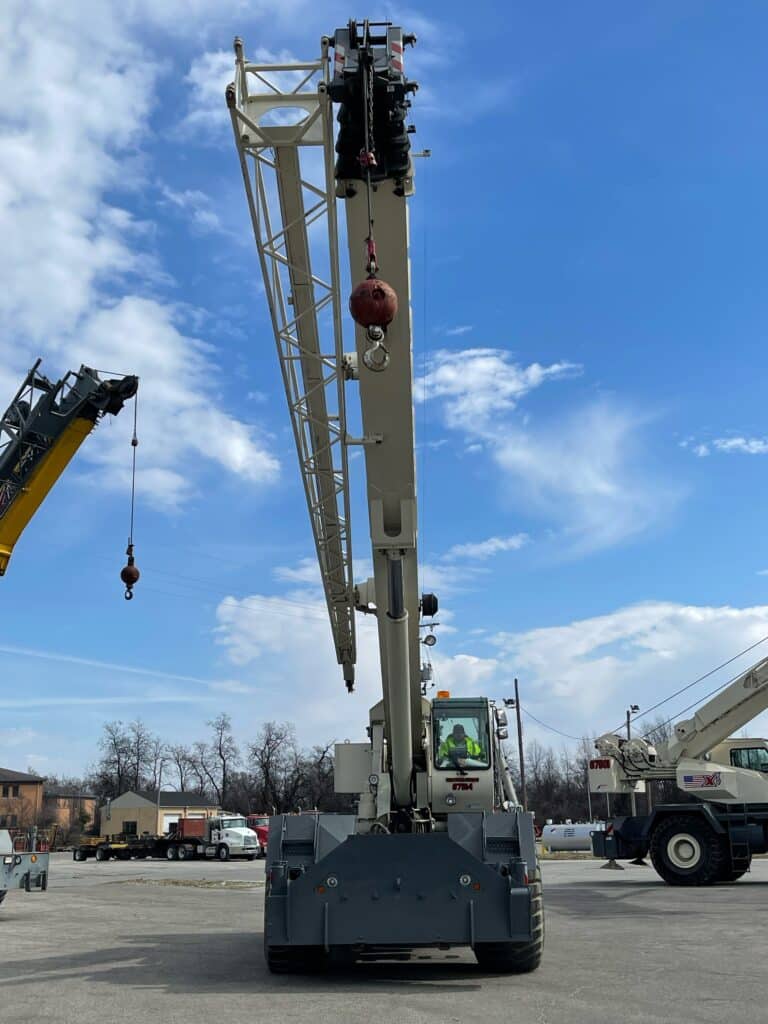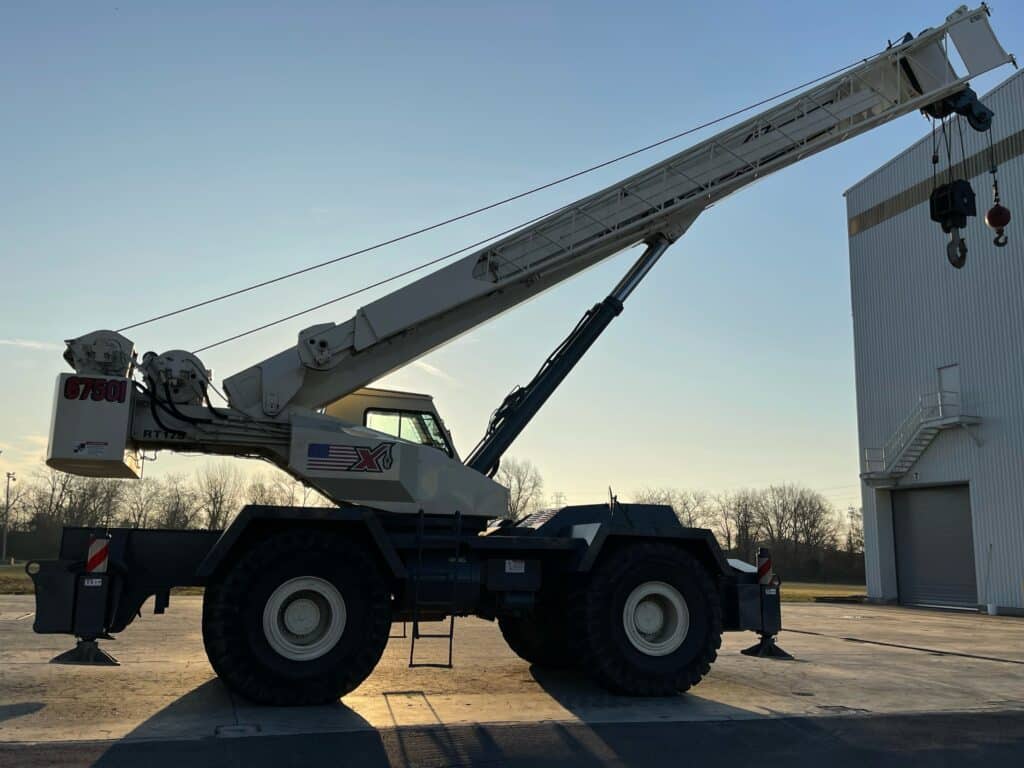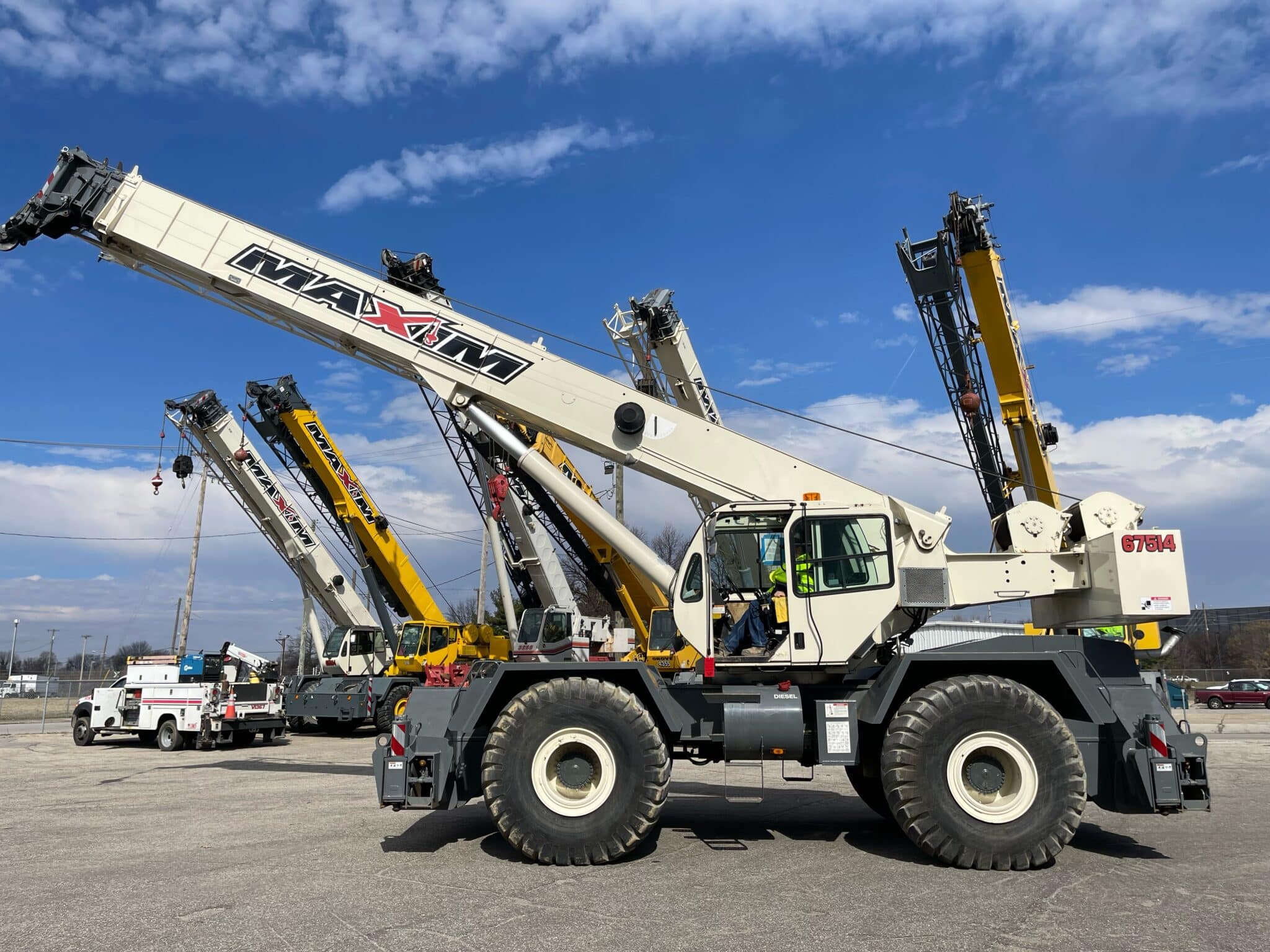A crane is an effective piece of equipment for lifting and moving heavy loads to different locations in a worksite. However, these heavy pieces of machinery differ in the type of terrain and weather conditions they can handle.
Renting the right crane is vital for cost-effectiveness and safety. Maxim Crane Works has an extensive inventory of cranes and lifting equipment available for rent, including rough terrain and all-terrain cranes.
Both are good mobile crane options. Rough terrain cranes come with a hardy body best suited for rugged terrain, while all-terrain cranes can operate well in all weather conditions. Here is a comprehensive guide comparing rough terrain cranes vs. all-terrain cranes.
Factors That Distinguish Rough Terrain Cranes vs. All-Terrain Crane

Below are several key factors to help you pick between rough terrain and all-terrain cranes for your construction project.
Mobility
The conditions on a worksite determine how easily and safely a crane can navigate the environment while lifting heavy loads. Rough terrain cranes operate well in rugged and uneven environments, like mines and construction sites. This crane type has advanced mobility features such as four-wheel steering and oversized tires that allow it to traverse easily on rough terrain.
The multiple-wheel steering mode increases the steering response and mobility, keeping the crane stable even at high speeds. Oversized tires allow for more weight distribution on the surface, reducing the chances of the crane sinking into the muddy ground.
All-terrain cranes are specially built to operate on various road surfaces, such as dirt, asphalt and gravel roads. Several features, such as an all-wheel drive system, an extra set of wheels and a suspension system make an all-terrain crane an excellent pick for handling different road surfaces.
- An all-wheel driving system allows the crane operator to operate the crane more efficiently and get a better grip on slippery surfaces.
- An extra set (or sets) of wheels allow the crane to be in constant contact with the road surface. This prevents the crane from losing traction, which could lead to a hazardous accident.
- Sometimes, the surfaces on the worksite may be uneven, complicating things for even a seasoned veteran. A sound suspension system absorbs the impact from uneven surfaces, enhancing the operator’s safety and comfort.
You can also move an all-terrain crane independently from site to site without the help of a truck, which lowers transportation costs.
Transportation Logistics
Once you’ve rented a crane, the heavy machine has to move from the rental company’s yard to your worksite. Depending on the type of crane rented, transportation logistics involve:
- Preparing a transport vehicle
- Obtaining permits for oversize loads
- Securing the crane properly for transport
These measures ensure that rented cranes get transported without damage and don’t impact the safety of other road users.
Rough terrain cranes are ideal for only off-road applications. Most rough terrain cranes come fitted with a single engine to power the undercarriage and crane. This feature doesn’t allow the crane to move fast enough on public roads within the recommended speed limits. You can safely use a trailer or flatbed truck to transport your rough terrain cranes to the worksite.
All-terrain cranes can safely travel on roads without losing their off-road maneuverability, providing easier transportation of the equipment.
Load Capacity
A crane’s load capacity is the maximum weight the crane can safely lift and move. The boom strength, hoist system capacity, and base stability determine your crane’s load capacity.
To select the right crane, you need to know its lift capacity. Picking a crane with the appropriate lifting capacity reduces the risk of falling loads that can damage the other construction equipment or injure personnel.
The rough terrain cranes’ load capacity ranges from 30 to 150 tons. This broad range allows the crane to lift many loads in off-road conditions over a short distance. You benefit from higher lifting power despite the small size of rough terrain cranes.
The all-terrain crane’s load capacity is much higher, ranging from 40 to 1000 tons. Features such as counterweights, extra weight, and outriggers give the all-terrain crane this extra loading capacity.
Rental Cost and Maintenance
Factors such as the type of crane, duration of the rental, and location of the site determine how much you’ll pay for the crane rental services. Careful consideration of these factors allows you to adjust them to fit your intended budget goals.
The rental cost of all-terrain and rough terrain cranes may be similar since both can operate well in off-road and rugged terrains. However, on average, the all-terrain crane is slightly more expensive since you can lift heavier loads and operate the crane on various surfaces. Request a quote to determine the rental cost of our rough terrain or all-terrain cranes for your project.
Both cranes require regular maintenance to ensure the worksite’s safety and proper operation. Maxim Crane Works makes sure all rental cranes meet these standards by performing:
- Regular inspections
- Part replacements
- Moving part lubrication
- Bolt and cable tightening
Which Is The Right Crane for Your Rental Project?

The construction, mining, marine and oil industries rely on cranes to safely and efficiently transport heavy on-site materials and loads. Does your project require a crane? Consider renting the right crane to keep within your project budget and deadline. Determining the crane’s mobility, transportation logistics, load capacity, rental cost, and maintenance cost can help you pick a crane that meets your project’s needs.
At Maxim Crane Works, we are ready to help you select a crane for your project. Feel free to ask our qualified heavy equipment specialists for further info on cranes available for hire in our inventory. For a more comprehensive and friendlier user experience, check our library of crane load charts to find the right equipment for your project.



